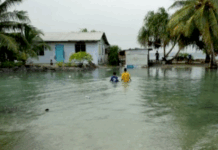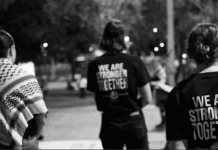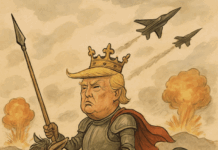
By Irra Lee
Tikanga-based mahi toi and mental wellbeing come together in an Auckland artist’s work with pounamu and bone.
Maha Tomo, of Ngai Tahu, Rangitane, Tainui, and Ngāti Kauwhata, fuses indigenous values, education, and art in his carving workshops designed with mental health and rangatahi at its forefront.
Tomo says his workshops, run in schools and communities in East, West and South Auckland, are his way of giving back after his own struggles as a young person with mental health and addiction.
“I always thought if I ever got through my challenges that I would pay it forward and show gratitude by sharing my knowledge with others.
“I’ll always remember those who helped me, and hopefully I can be the same beacon of light to others,” he says.
Tomo’s passion for carving came from a young age after his grandfather gave him a bone carving from the South Island. The idea of combining mental wellness and art came to him when he was studying a Bachelor of Creative Arts at Manukau Institute of Technology.
“When I wasn’t studying, I was working a lot with people going through major challenges in their lives.
Creating wellness
“That’s where the component of creating wellness in my workshops came from because I studied cross-cultural supervision and mental health and other addictions as well.”
Tomo promotes wellbeing in his workshops by integrating indigenous and modern knowledge and concepts. He teaches from a Māori perspective, incorporating values such as tikanga (process), whakawhanaungatanga (togetherness), manaakitanga (support), and wairauatanga (spiritual resilience).
“There is a definite resurgence in pounamu and the interest in indigenous platforms as wellness strategies.
“I like to incorporate a lot of both worlds – taking the best of mainstream education but also adding those beautiful aspects of indigenous learning.”
He says his dedication to sharing indigenous ways of teaching through traditional values comes from learning from other community leaders. His experiences with rangatahi in schools also play a role.
“Working on these workshops, I find a lot of young people are kinesthetic learners that learn through actually doing rather than perhaps studying for a test.
“I see art as a vehicle moving forward that I can use to support mental health within the community and young people that are challenged by mainstream techniques of teaching.
“There’s nothing wrong with mainstream; I think it works well for many. But, for the ones getting left behind, I see my mahi with pounamu and with bone as a safety net that might catch some of the learners that are struggling. I’m just here to provide a safe environment,” says Tomo.
Irra Lee is a second year student journalist in the Bachelor of Communication Studies degree at Auckland University of Technology.











































